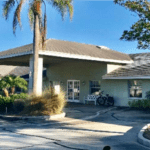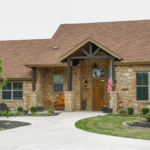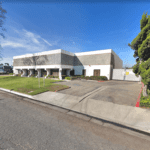A: Growing up in New York, I had the opportunity to work in banking and finance on Wall Street right out of college. My first job in the mid-80s was in the New Products Division of the Dreyfus Corporation, and in that role, I participated in the creation, development, marketing, and servicing of various financial products. Early in my career, I was assigned to work directly for the President of a bank owned by Dreyfus to assist in the creation of mortgage products that were eventually sold in various states on the eastern seaboard. That experience set the stage for my career in banking and finance, and over the years as an attorney and banker, I have been fortunate to both represent and work for banks and other lenders.
Wilshire’s exposure in Seniors Housing was originally not by design. There was a small portfolio of deeply troubled assets that the Florida Agency for Healthcare Administration was trying to resolve. We were requested to provide financing for the acquisition, turnaround, and stabilization of the portfolio. Due to the experience of the buyer, the team assembled, and AHCA’s approach in the sale, we are able to quickly get past our initial trepidation and structured a facility to finance the transaction. That first transaction led to a series of others where there was strong, committed sponsorship with viable opportunities, but the transactions were currently just outside the banker and agencies’ credit box.
Over the years, we found that there is a need for alternative financing solutions among regional owners and operators of mid-size properties. Specifically, those owners and operators do not have broad access to capital like the national firms, but they also do not experience many of the issues faced by very small owners and operators.
We have found that as a whole, the Seniors Housing sector is comprised of a terrific group of dedicated people who are committed to the care, safety, and quality of life of our seniors. We have also found that regional owners and operators are a group of businesspeople who have been able to balance a deep level of commitment to the care of their residents with operating a profitable enterprise. That history and experience are the primary drivers of our focus on meeting the unique needs of regional owners and operators in the Seniors Housing space.
A: The Seniors Housing sector is facing a number of challenges, some of which were magnified by the pandemic. Right now, occupancy, recruiting, and increasing operating costs top the lists of many owners and operators. As a result, many lenders are reevaluating and adjusting their underwriting approaches given the challenges being faced in the current environment.
Anecdotally, there is a sense that there are fewer lenders active in the Seniors Housing sector than in the pre-COVID environment. That dynamic may be the result of the actual number of lenders in the space decreasing, a shrinking of the credit box giving the sense there are fewer lenders or less capital available, or a combination of those and other factors.
With respect to financing under $10 million, there were not many lenders servicing that sector of the Seniors Housing market pre-COVID. Today, there are both opportunities and challenges for regional operators of midsized facilities that fall outside the loan parameters of banks and the agencies. Whether capital is needed for strategic acquisitions or competitive repositioning—a gap remains. Our company is committed to providing alternative financing solutions to regional owners and operators to help bridge the gap.
A: Bridge loans have been a financing tool used for decades in various segments of the real estate market. The form, nature, and scope of bridge lending evolved over the years due to a number of factors, including a persistently low interest rate environment driving more capital into the bridge lending space in search of higher returns and a more institutional approach to its application. Now, as opposed to being considered an esoteric financial product, bridge lending generally is considered more mainstream and has become an essential part of an owner/operator’s financial arsenal. While bridge loans are not be the right solution in every situation because of the higher cost and shorter duration of the loans, bridge loans are being used in an increasing number of circumstances where greater speed and flexibility is needed, or because the traditional forms of capital are not the right fit or otherwise unavailable.
A: The challenges facing the Seniors Housing market are also creating opportunities. Virtually all of my recent site visits involved strategic, acquisitions by in-market regional operators. They have involved existing, purpose-built facilities with a value-add component (as opposed to repurposing an asset with a prior use to an assisted living facility). Some of those acquisitions involved the sale by a prior owner who was out of market, was struggling pre-COVID, and made the election to sell the asset to consolidate their time, money, and attention on other assets in their portfolio.
The new owner/operators are typically an experienced group with one or more facilities in the same or an adjacent market and strong “boots on the ground” in the form of experienced administrators and marketing/business development personnel with multiple existing channels for new resident referrals. Because the facilities being acquired are struggling with occupancy and operating cost issues, the purchaser is not able to obtain traditional financing. The loans we are making are part of a two-step financing approach where the bridge loan is structured with reserves and holdbacks for payments, capital improvements and operating expenses, and longer term, traditional financing is anticipated once the facility is stabilized.
Based on what we are hearing in the market and the up-tick in inquiries over the last 2 quarters, I believe we will see more of these types of acquisitions in 2022.
A: I’m generally optimistic about the Seniors Housing sector as a whole. Based on recent data, many facilities are in a much better position financially than this time last year. There are, however, several headwinds facing the Seniors Housing sector in the near term.
First, is the continuing impact of COVID. At the time of this article, several countries are moving toward widespread lockdowns to battle a spike in cases and concern over additional variants of the virus. Second, recruiting, retention, and wages will continue to place pressure on facilities. Most owners and operators we talk with state that this is one of their largest challenges behind occupancy. Third, rising costs and inflation will impact the operating margins of the facilities. From insurance to supplies, costs are rising. As a result of the sum, owners and operators are exploring ways to both increase revenue and control costs.
Other lenders we talk with are considering all of those factors and are trying to determine how to best approach the market. Further, while regulators have been patient as financial institutions were addressing the crisis and the immediate need for relief of certain borrowers, that patience may start to wear thin with some borrowers if their operations continue to lag significantly behind their peers. Therefore, in addition to their internal discussions about prudent lending approaches in the current environment, some lenders also need to comply with changing agency guidance related to lending in this sector.
Absent other events which change the landscape, I believe that lenders will continue to be active in the space and that capital will be available. However, I also believe that how lenders approach the Seniors Housing sector will change. In the near term, the advance rates (or LTVs) will be less aggressive and the costs, reserves, and other structural elements will increase.













